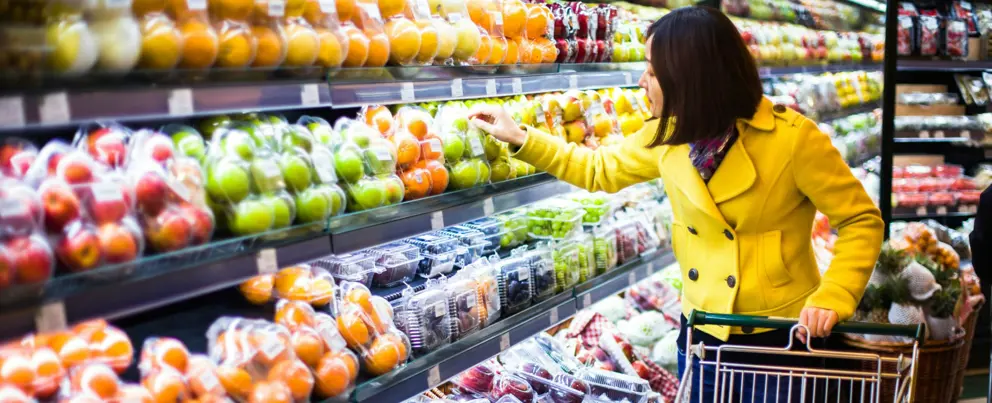Most adults should consume no more than 2,300 mg of sodium a day (about 5 mL/1 tsp of table salt) from sources such as packaged food products and added while cooking or at the table. However, if you have high blood pressure, you will need to work with your doctor to find the right amounts for you.
These heart-smart shopping tips will help you make sense of nutrition labels, with a focus on sodium.
Look at serving sizes
- The serving size tells you how much food the Nutrition Facts table is referring to. For example, one serving on most bread packages is one slice. So if you are going to make a sandwich with two slices of bread, you must multiply all the nutrients listed by two, including the sodium.
- Make sure when comparing two food products in the same category, the serving sizes are the same.
Check the % daily values (DV)
- Daily values (DV) percentages tell you if there is a little or a lot of a nutrient in a food per serving.
- Look for food products that are lower in sodium per serving. For example:
- A small serving of crackers (20 g) contains about 10% DV sodium
- A 250 ml serving of prepared soup (125 ml condensed) contains about 20-27% DV sodium
- A serving of a prepared entree contains about 30% DV sodium
- If you have been diagnosed with high blood pressure, please speak to your doctor about the amount of sodium you should be consuming.
- When comparing % DV of similar products, make sure the serving sizes are the same, then choose the one that has a lower number for the % Daily Value for saturated fat and trans fat.
Read the ingredients list
- The ingredients list itemizes all the foods and additives found in the product beginning with the ingredients used most. For example, if sodium is listed within the first three ingredients, the food most likely contains a lot of sodium.
- Watch for other names for sodium such as table salt, sodium chloride, sodium monochloride, sodium nitrate, sodium bicarbonate and soy sauce.
Be aware of package claims
- Keep in mind that just because a food claims to be low in sodium doesn’t mean it’s healthy.
- These foods may still be high in fat, sugar and other undesirable ingredients.
Other sodium-reducing tips
- Draining and then rinsing canned vegetables and beans with water could reduce the amount of sodium by up to 50% of the total on the Nutrition Facts table.
- One of the best ways to reduce the amount of sodium you consume is by eating lots of fresh vegetables, fruit and whole grains and limiting processed and packaged foods, luncheon meats, soups and sauces.
- If you have been diagnosed with high blood pressure, you may wish to follow the DASH eating plan.
There are lots of ways to enjoy low sodium, high flavor foods. Check out meal ideas and recipes from Heart & Stroke today.
